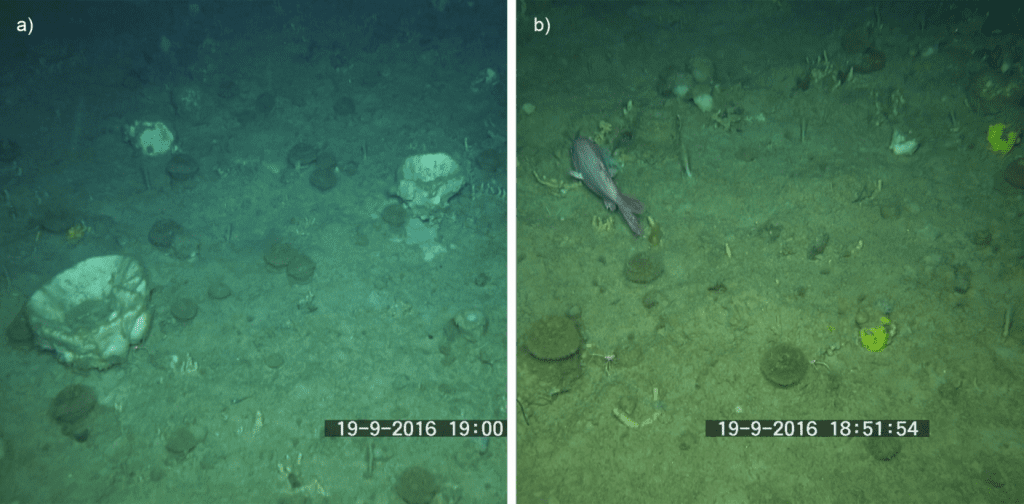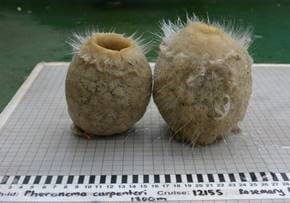Marine
Deep Sea Communities Explored at Rosemary Bank
December 19, 2019 by Marine Directorate Communications No Comments | Category Collaborations, Marine Directorate general, Marine Directorate Science, Marine Directorate Surveys, Publications, Research Vessel Surveys
A team of scientists, with the lead author from Marine Scotland Science (MSS), have had a paper published in the Deep Sea Research Part I journal describing the deep sea communities of the Rosemary Bank Seamount Marine Protected Area (MPA) in the North East Atlantic.
The paper provides essential baseline information on the composition of fish and invertebrate communities at Rosemary Bank Seamount, and a description of how these communities change with depth.
It was found that the fish formed four distinct communities on the seamount, from the summit plateau to the deep moat at the base. The invertebrates had two distinct communities on the seamount, which included extensive and diverse deep-sea sponge grounds occurring on the lower slope.
These findings are based on a decade of study by our colleagues using visual and trawl surveys from 2007 to 2017 and provides a reference point to assess the impact of management intervention in the future.
This paper was produced as part of our core work to provide evidence to support policies and regulations aimed at the conservation and management of Scotland’s waters. These include: Scotland’s National Marine Plan, the Scottish Biodiversity Strategy, the OSPAR Convention, and the UK Marine Assessment.
The deepwater surveys that contributed the data for this paper were undertaken aboard MRV Scotia and the work was funded by the Scottish Government projects EcoSDEEP and MOREDEEP.
This work is also part of a larger body of work that has earned us a ‘Highly Commended’ award for ‘Innovation’ at the recent Nature of Scotland Awards.

Seabed imagery from towed camera system depicting sponge grounds; a) Geodia atlantica (large white cup-shaped sponges) and ‘Tetilla’ longipilis (small brown round sponges), and b) ‘Tetilla’ longipilis (small brown round sponges), Hexadella cf dedritifera (yellow encrusting sponges) together with an orange roughy (Hoplostethus atlanticus).
Further Information:
- Deep Sea Research Part I: A community assessment of the demersal fish and benthic invertebrates of the Rosemary Bank Seamount Marine Protected Area (NE Atlantic).
- Lead author on this paper was Dr Dafne Eerkes-Medrano. Contributing to the paper were colleagues from: Marine Scotland Science, World Maritime University, Uppsala University, and NUI Galway.
- MOREDEEP Project on the MS Data Site.
- Previous blog post detailing this work.
Tags: Deep Sea Research, deep-sea, deep-sea sponge, Monitoring, MRV Scotia, Nature of Scotland, OSPAR Convention, publication, research, Rosemary Bank, Rosemary Bank Seamount, science, scientific paper, UK Marine Assessment



Leave a comment